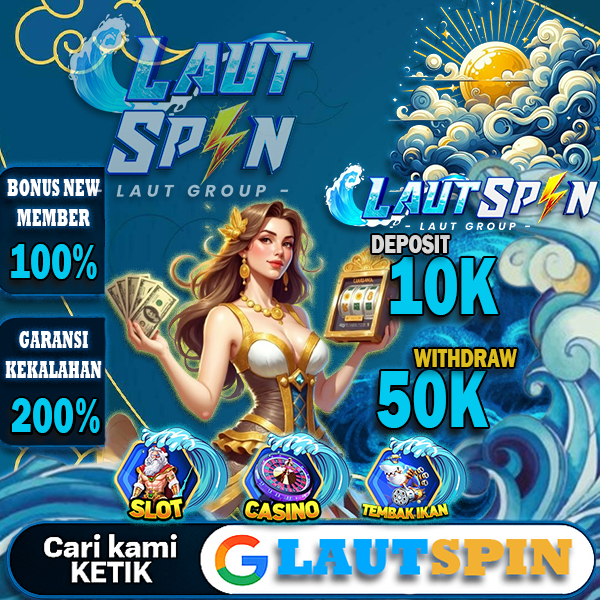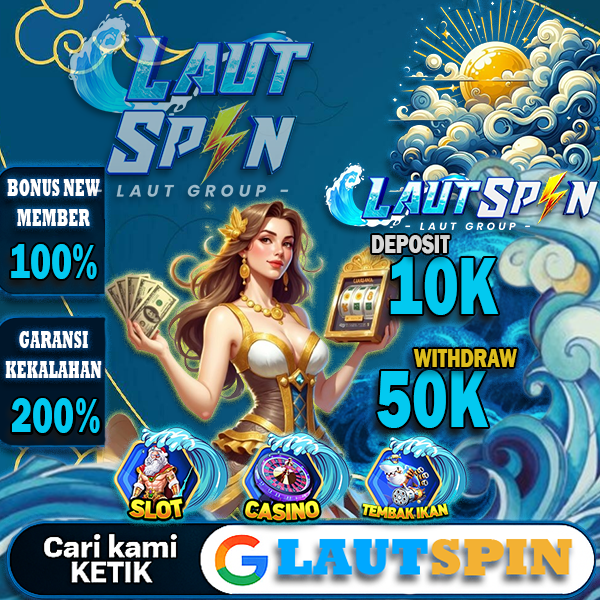Banyak diminati. 14,6k orang membeli ini dalam 24 jam terakhir.
Harga: Rp.10.000, + 10K
Normal: Rp 100.000+
Diskon segera berahir 22:55:55
LAUTSPIN: Slot Deposit Bank Bukopin Dengan Cashback Otomatis Tiap Minggu
Slot Bukopin di LAUTSPIN memanjakan pemain lewat cashback rutin dan RTP gacor. Transaksi lancar bikin pengalaman bermain makin maksimal.
Star Seller
Star Sellers have an outstanding track record for providing a great customer experience—they consistently earned 5-star reviews, shipped orders on time, and replied quickly to any messages they received.
-
1. Enter Name/Text
2. Color of Yarn (Default color is white yarn if none selected)
*This is oversized jumper, select one size smaller for a more fitting look0/1024
You can only make an offer when buying a single item
Star Seller. Penjual ini secara konsisten mendapatkan ulasan bintang 5, mengirim tepat waktu, dan membalas dengan cepat setiap pesan yang mereka terima.
Highlights
Slot Bukopin di LAUTSPIN memanjakan pemain lewat cashback rutin dan RTP gacor. Transaksi lancar bikin pengalaman bermain makin maksimal.
-
Pesan hari ini dan akan tiba pada: Sep 28-Okt 7
Jika anda bermain dan dapat situs Slot77 gacor yang memiliki lisensi resmi seperti situs slot pakai bank bpd. Anda berhak mendapatkan hadiah tambahan yang besar hari ini.
-
Pengembalian dan penukaran tidak diterima
Namun, silakan hubungi saya jika Anda memiliki masalah dengan pesanan Anda
-
Cost to ship: Rp 25.000
-
Ships from: Indonesia
There was a problem calculating your shipping. Please try again.
SLOT PAKAI BANK BPD Perlindungan Pembelian
Berbelanja dengan percaya diri di SLOT PAKAI BANK BPD, mengetahui jika terjadi kesalahan pada pesanan, kami siap membantu Anda untuk semua pembelian yang memenuhi syarat —
see program terms
Captcha failed to load. Try using a different browser or disabling ad blockers.
4.9 out of 5
(10.5K reviews)
All reviews are from verified buyers
SLOT PAKAI BANK BPD ini benar-benar gacor! Saya main di sini baru seminggu, tapi udah beberapa kali tembus scatter dan dapet maxwin X1000. Proses withdraw-nya juga cepet banget, nggak pake nunggu lama. Pokoknya mantap!
Saya udah coba banyak situs slot, tapi cuma SLOT PAKAI BANK BPD yang paling stabil. Game-nya lengkap, dari Pragmatic, PG Soft, sampai Habanero semua ada. Link gacornya juga beneran terbukti, sering banget jackpot besar keluar malam hari.
Main di SLOT PAKAI BANK BPD rasanya beda. RTP-nya tinggi banget, dan setiap kali login selalu ada event bonus atau free spin. Saya paling suka slot Gates of Olympus di sini karena sering kasih sensasi maxwin beneran!
Saya sudah main slot online lebih dari 5 tahun, tapi belum pernah nemu situs segacor SLOT PAKAI BANK BPD. Sistemnya cepat, tampilannya modern, dan support-nya 24 jam responsif. Benar-benar situs slot terpercaya untuk cari maxwin X1000.
Photos from reviews
This seller usually responds within 24 hours.
Smooth shipping Has a history of shipping on time with tracking.
Speedy replies Has a history of replying to messages quickly.
Rave reviews Average review rating is 4.8 or higher.




